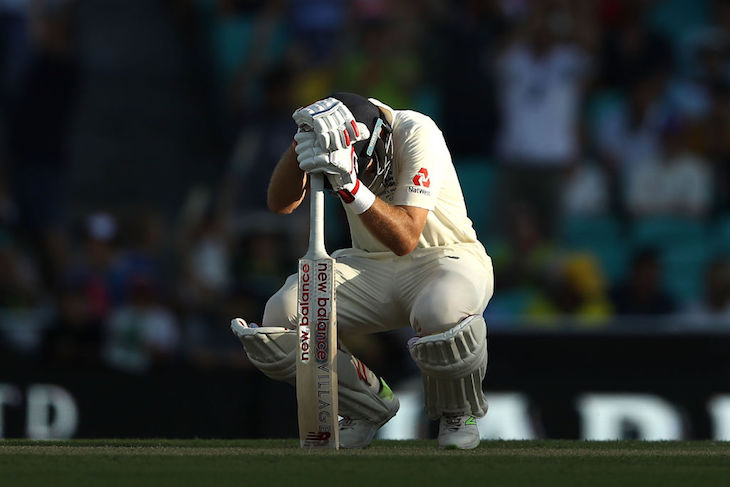So will the sight of poor Joe Root at Sydney, pale as a ghost and barely able to stand, heroically facing 90mph bowling in a totally doomed cause, all the while racked with a tummy bug, mark the beginning of a rethink for traditional long-form cricket? Make no mistake, like millions I love the Ashes, but this was a dull series with a lot of very repetitive cricket, whether you were there — as I was for a few Tests — or one of an ever-dwindling band of late-night viewers in front of the BT coverage. And just because I can remember huddling round a small black-and- white telly as a kid to watch Kenny Barrington inch his way to 85 not out at the end of a full day’s play doesn’t mean such memories matter a fig to anyone in the future.
Many more tours like this, and Test cricket will be in trouble. It is already less visible, with matches involving former great nations such as Pakistan, New Zealand and West Indies largely dying or dead. The traditionalists will say that Ashes cricket will always be a major event, and India, South Africa, England and Australia will still play Test cricket against each other as long there is demand. (Though how much, I wonder, was the great A.B. de Villiers paid to come out of ‘Test retirement’ for the modestly supported current home series against India?)
No, the truth is that not enough happens for modern tastes. On a flat pitch at the WACA, 43 for two in a session is just not good enough. Neither are innings lasting 180 overs with a scoring rate of mostly less than three an over. The home crowds were restless at Perth, Melbourne and Sydney, with most of the atmosphere coming from the Barmy Army.
So will five-day Tests with tea at 20 to four become an anachronism for all but old codgers like me, sitting in a deckchair with nurse not too far away? Lurking not so far away in the wings is the power behind the game, the Indian broadcasters. India controls international cricket, but Test cricket (apart from the Ashes and games involving India) no longer fills grounds or attracts TV advertising. T20 cricket does, as does the 50-over game if it’s day-night. The five-day format is simply too slow, too biased toward home teams, and there is just not enough tension per session.
I am told broadcasters say privately that they only want to screen games with full grounds, with a result, and at prime time. They argue that the long form must be rethought completely, with Test matches of four days maximum, all day-night to ensure crowds and prime-time viewers, and ticketed cheaply to ensure big crowds. Each innings would be 120 overs with incentives for results, and the format supported by a World Cup to attract outlier nations (New Zealand and so on). Administrators must grasp the nettle of the new long form, otherwise Test cricket as played by Gavaskar, the Chappells, May and Kallis is dead.
Three things we learnt over the holiday: Anthony Joshua always makes his bed before leaving home. It makes you feel better when you get in at night, he says. What a well-brought-up young man he is. Second, the presenter Kelly Cates, besides being Kenny Dalglish’s daughter, is a massive breath of fresh air in the dull old world of football punditry. She showed the boys a thing or two with a blistering attack on the pampered narcissism and lavender tuxes of the Ballon d’Or player of the year awards on Fighting Talk. Give that girl her own show soonest. Finally, he might be a big lad but the reaction of Rob Cross at the moment of his World Championship victory over Phil Taylor was a moment when darts led the way for graciousness and fully human interaction in sport. (Taylor’s subsequent dad-dancing to Coldplay was less so, but hey, after 30 years and 16 titles he had probably earned the right.)







Comments